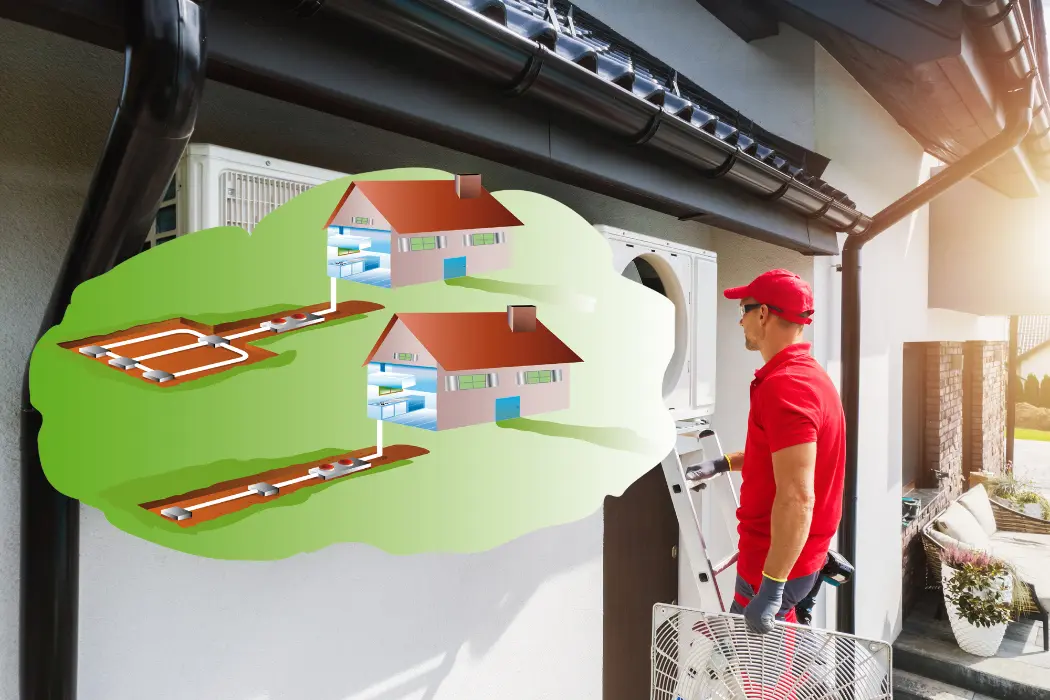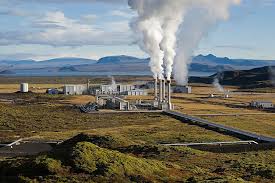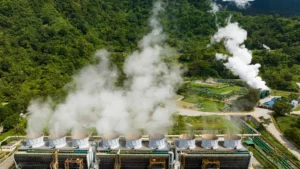Are you considering installing a geothermal heat pump in your Alberta home, but feeling overwhelmed by the options available? Don’t fret, we’re here to help you navigate through the different types of geothermal heat pumps and determine which one is the best fit for your specific needs. From understanding the various system configurations to considering the size of your property and your heating and cooling requirements, we’ll provide you with the information you need to make an informed decision. By the end of this blog post, you’ll have a clear understanding of which geothermal heat pump is right for your Alberta home.
Types of Geothermal Heat Pumps
As a homeowner considering a geothermal heating for your Alberta home, it’s important to understand the different types available. Geothermal heat pumps come in three main types: open loop systems, closed loop systems, and direct exchange systems. Each type has its own set of advantages and considerations, so it’s essential to weigh these factors when making your decision.
| Open Loop Systems | For homes with access to a clean and ample water supply |
| Closed Loop Systems | Uses a continuous loop of buried pipes to transfer heat |
| Direct Exchange Systems | Uses copper tubing to directly exchange heat with the ground |
| Loop Configuration | Horizontal, vertical, or pond/lake loop configuration |
| Environmental Impact | Considerations for environmental impact and permitting |
Open Loop Systems
Loop systems, such as open loop, draw groundwater from a well as a heat source/sink. The water is then pumped through the heat pump’s heat exchanger and returned to the Earth either through a recharge well or surface discharge. Open loop systems are ideal for homes with access to a clean and ample water supply, but it’s important to consider water quality and availability before opting for this type of system.
Closed Loop Systems
For homes without access to a clean water supply, closed loop systems provide an alternative. These systems use a continuous loop of buried pipes to transfer heat between the home and the ground. Closed loop systems can be configured as horizontal, vertical, or pond/lake loops, offering flexibility for installation in various property types. Importantly, closed loop systems do not consume water, making them a more sustainable choice for certain environments.
Heat exchange systems are designed to transfer heat between your home and the ground, offering an energy-efficient solution for heating and cooling. With a variety of configurations and environmental considerations, it’s important to evaluate the specific needs of your property and environmental impact before choosing the right geothermal heat pump for your Alberta home.
Direct Exchange Systems
Loop systems, such as direct exchange, use copper tubing to directly exchange heat with the ground. This type of system eliminates the need for a secondary heat exchanger, making it more efficient in some cases. However, direct exchange systems may require additional consideration for installation and maintenance, particularly in areas with specific soil or geological conditions.
Systems like direct exchange are designed to provide efficient heating and cooling for your home, utilizing the natural heat storage capacity of the Earth. When considering a direct exchange system, it’s vital to assess the specific requirements of your property and the potential environmental impact, ensuring that it’s the right fit for your Alberta home.
Factors to Consider When Choosing a Geothermal Heat Pump
Clearly, there are several factors to consider when choosing a geothermal heat pump for your Alberta home. From climate considerations to soil and land availability, and energy efficiency to cost savings, each factor plays a crucial role in determining the right option for your specific needs. Making an informed decision is key to maximizing the benefits of geothermal heating and cooling.
- Climate considerations in Alberta
- Soil and land availability
- Energy efficiency and cost savings
Any miscalculation in these factors can lead to inefficiency and increased costs in the long run.
Climate Considerations in Alberta
Consider the climate in Alberta when selecting a geothermal heat pump. The harsh winters and varying temperatures throughout the year make it essential to choose a system that can handle the demands of the local climate. No one wants to invest in a system that can’t withstand the extreme weather conditions.
Consider the soil type and land availability in your area. It’s crucial to ensure there is enough space and the right soil conditions to accommodate the underground loop system required for geothermal heat pumps. Any limitations in this area can impact the feasibility and efficiency of the installation.
Soil and Land Availability
Any geothermal installer will tell you that the suitability of your land and soil for a geothermal heat pump is crucial. The type of soil and available land will determine the feasibility and cost of the installation. The size and permeability of your land will also affect the design and efficiency of the geothermal system. The wrong soil type or limited land availability can significantly impact the performance of the system.
The excavation and installation process can be influenced by the composition and size of your property. The wrong soil type or limited land availability can significantly impact the performance of the system, potentially leading to higher costs and reduced efficiency in the long run.
Energy Efficiency and Cost Savings
Landscaping consideration is also important in geothermal heat pump installation. The outdoor unit’s location and accessibility can impact the system’s efficiency and overall cost. It’s essential to plan the installation carefully to ensure optimal performance and long-term cost savings.
Cost and energy efficiency are critical factors to consider when choosing a geothermal heat pump system. Investing in a high-efficiency system may come with a higher upfront cost, but it can lead to significant long-term savings on energy bills. Additionally, consider the available rebates and incentives that can help offset the initial investment and improve the cost-effectiveness of the system.
Installation and Maintenance
Your choice to install a geothermal heat pump in your Alberta home is a wise investment that will provide efficient heating and cooling for years to come. However, it’s important to understand the installation process and long-term maintenance requirements to ensure the optimal performance of your system.
Installation Process Overview
With the installation of a geothermal heat pump, the first step is to conduct a thorough assessment of your property to determine the best placement for the system. This typically involves drilling boreholes into the ground, laying the necessary piping, and connecting the system to your home’s heating and cooling distribution system. The installation process is complex and should be carried out by experienced professionals to ensure safety and efficiency.
Once the geothermal heat pump is installed, it requires minimal maintenance to continue operating at peak performance. Regular inspections, filter changes, and system checks are necessary to ensure optimal efficiency. It’s important to have a professional technician conduct annual maintenance to address any issues and keep the system running smoothly.
Final Words on Which Geothermal Heat Pump Is Right For You
Following this exploration of geothermal heat pumps, it’s clear that there are several options to consider for your Alberta home. The right choice of geothermal products will depend on factors such as your home’s size, the layout of your property, and your budget. It’s important to consult with a professional to determine which geothermal heat pump is the best fit for your specific needs. With the potential for significant energy savings and environmental benefits, investing in a geothermal heat pump can be a wise decision for many homeowners in Alberta. Take the time to carefully weigh your options and make an informed decision that will bring efficient, sustainable heating and cooling to your home for years to come.



